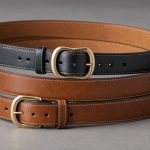In today’s digital era, online shopping for clothes is not merely a convenience; it’s a necessity for many. Fashion enthusiasts and everyday shoppers alike embrace the vast array of styles available at their fingertips. However, one challenge remains universal: How do you ensure the clothes you buy online will fit perfectly? With the absence of physical fitting rooms, shopping for clothing online requires a meticulous approach to sizing, style selection, and understanding the nuances of quality. Let’s delve into practical strategies to help you confidently navigate the online fashion world and find the perfect fit for your body.
Understanding Your Measurements
Before embarking on your next online shopping journey, acquire a comprehensive understanding of your body’s measurements. This crucial step is often overlooked, yet it’s the foundation of finding the right fit. Armed with your exact size, you can bypass much of the guesswork involved when purchasing clothes online.
Also to discover : How can I style my outfits to look effortlessly chic while running errands?
Taking Your Measurements
Start by collecting accurate measurements of your chest, waist, hips, and inseam. Use a flexible measuring tape and get assistance if needed to ensure precision. Don’t underestimate the importance of measuring your shoulders and arms, especially if you’re considering items like jackets or blouses. Document these measurements and have them accessible whenever you’re shopping.
Topic to read : What type of clothing should I invest in for a long-lasting wardrobe?
Utilizing Size Charts
Online retailers provide detailed size charts that are invaluable resources. These charts often vary by brand, so never assume a universal sizing standard. Cross-reference your measurements with these charts to pinpoint the correct size for each item. Remember, a medium in one brand may be a large in another.
Understanding Fit Descriptions
Descriptions such as “slim fit,” “regular fit,” or “oversized” provide insights into how the clothing will sit on your body. An understanding of these terms will guide you in choosing styles that complement your body type and personal style. For example, if you prefer a looser fit, you might opt for a size up in a slim fit garment.
Evaluating Clothing Quality Online
While style and fit are pivotal, the quality of the clothing you choose impacts its longevity and aesthetic appeal. Evaluating clothing quality online requires a discerning eye and a few savvy strategies.
Inspecting Product Descriptions
Retailers offer detailed product descriptions that highlight fabric type, care instructions, and construction details. Look for natural materials like cotton, wool, or silk for quality assurance, as these fabrics generally offer better durability and feel. Understand the material’s care requirements to ensure longevity.
Reading Customer Reviews
Customer reviews are a trove of firsthand information. They often provide insights into the item’s quality, comfort, and fit from other purchasers who share your size and preferences. Pay attention to repeated mentions of issues such as fabric wear, color fading, or faulty stitching, as these are red flags.
Examining Product Images
Product images serve as an online fitting room. Look for images showing the clothing from various angles and in different lighting. Visual cues such as fabric texture, seam alignment, and how the garment sits on a model can help you assess quality and fit.
Exploring Brand Reputation
Reputable brands often uphold consistent quality standards. Research brands through fashion blogs, forums, or social media platforms to gauge their standing in the industry. Prioritize brands known for quality, transparency, and ethical production processes.
Choosing the Right Online Retailer
Selecting the right online retailer is paramount in ensuring a satisfying shopping experience. A trustworthy platform offers more than just a wide selection of clothing; it provides a seamless journey from browsing to buying.
Exploring Return Policies
Before making a purchase, familiarize yourself with the retailer’s return and exchange policy. A generous and flexible policy indicates confidence in their products and provides you with a safety net if the item doesn’t fit as expected. Look for retailers offering free returns or exchanges for added convenience.
Investigating Sizing Tools
Some retailers offer innovative sizing tools and virtual fitting rooms to enhance your shopping experience. These features allow you to input your measurements and receive tailored size recommendations. Utilizing these tools can significantly improve your chances of selecting the right size from the start.
Understanding Shipping Options
Evaluate the shipping costs and options available. Fast shipping may come with a higher price tag, but it’s often worthwhile for those with urgent fashion needs. Consider tracking and delivery guarantees, especially if purchasing high-value items.
Assessing Customer Service
Effective customer support enhances your purchasing experience. A retailer with accessible and responsive customer service teams can assist with inquiries about sizing, material, and delivery issues, ensuring you receive comprehensive support throughout your shopping journey.
Building a Personalized Online Shopping Strategy
To master the art of online clothes shopping, cultivate a strategy that aligns with your fashion goals, lifestyle, and personal preferences. This approach not only simplifies the process but also enhances your overall satisfaction with each purchase.
Curating Your Wardrobe
Begin by identifying core pieces that reflect your style and fulfill your daily wardrobe needs. A well-curated wardrobe reduces impulsive purchases and ensures every addition has a purpose. Consider classic staples like a tailored blazer, versatile jeans, and a little black dress.
Setting a Budget
Establish a budget to guide your online shopping endeavors. A financial plan helps prioritize purchases and prevents overspending. Allocate funds for high-quality pieces that elevate your wardrobe and provide long-term value.
Exploring Seasonal Trends
Fashion trends ebb and flow, so stay informed about current styles while ensuring they resonate with your personal style. Incorporate trends in moderation, blending them with timeless pieces for a balanced wardrobe.
Using Wish Lists
Most online retailers offer wish list features. Utilize this tool to track items you admire, compare alternatives, and monitor price fluctuations. A wish list enables thoughtful decision-making, reducing the buying pressure.
Conclusion: A Tailored Approach to Online Fashion
Venturing into the online world of fashion requires a strategic and informed approach. By understanding your measurements, assessing clothing quality, selecting the right retailer, and crafting a personalized shopping strategy, you can navigate the myriad of choices with confidence. Remember, the key to a successful online shopping experience lies in preparation, awareness, and a keen eye for detail. As you continue to explore the fashion landscape, these guidelines will serve as your compass, ensuring every purchase not only fits well but also enhances your personal style. Happy shopping!











